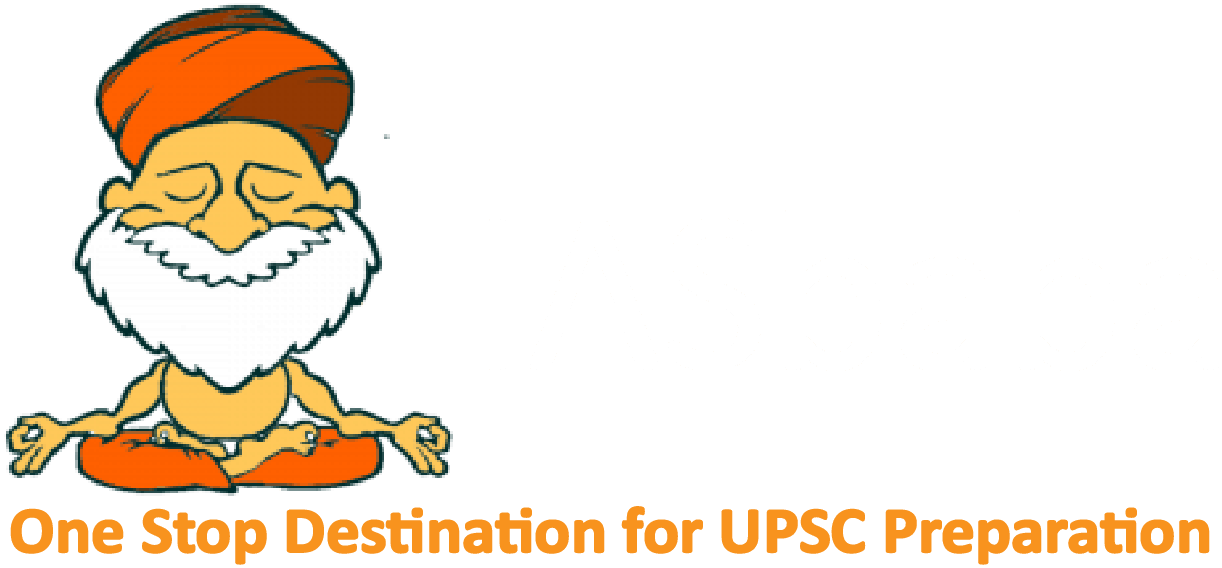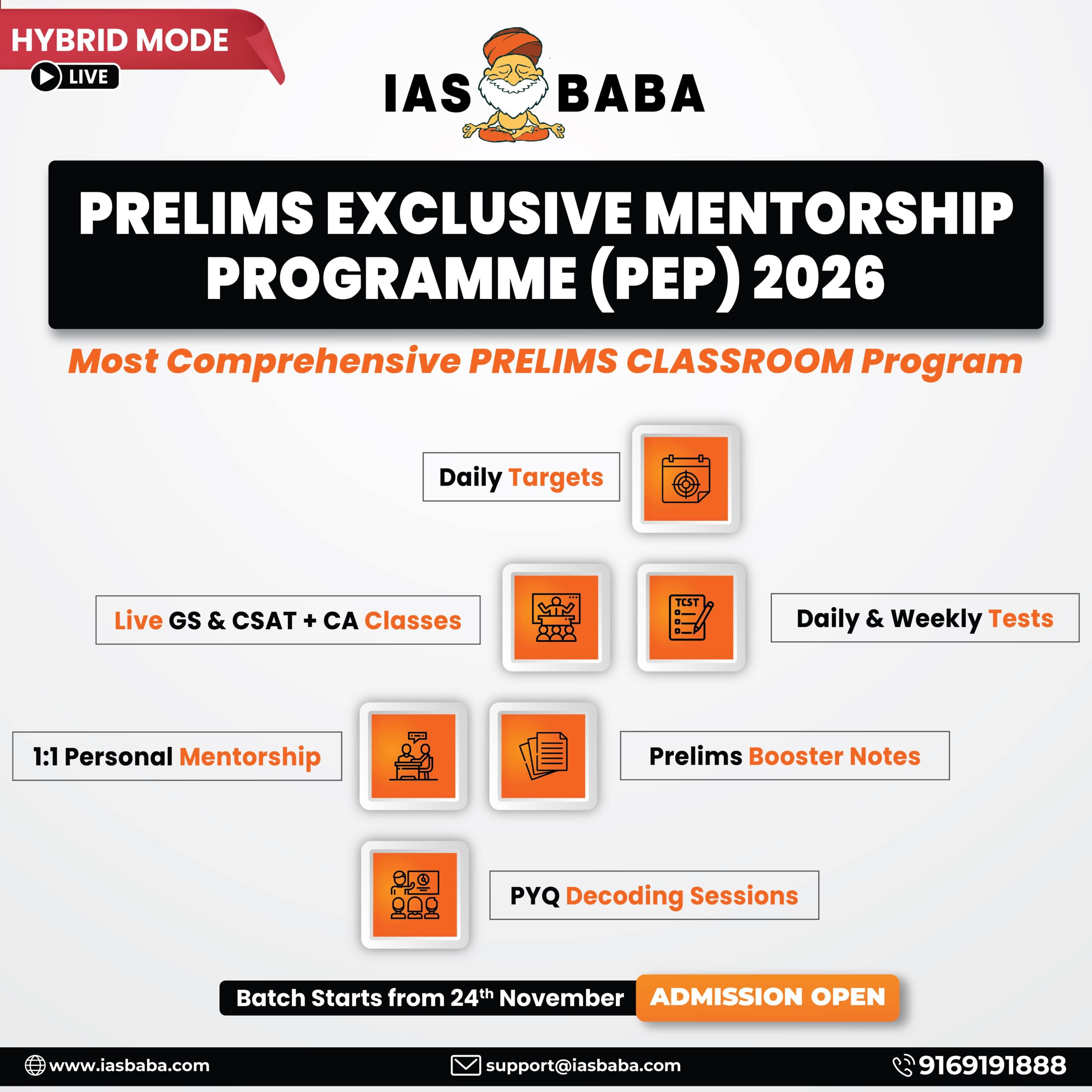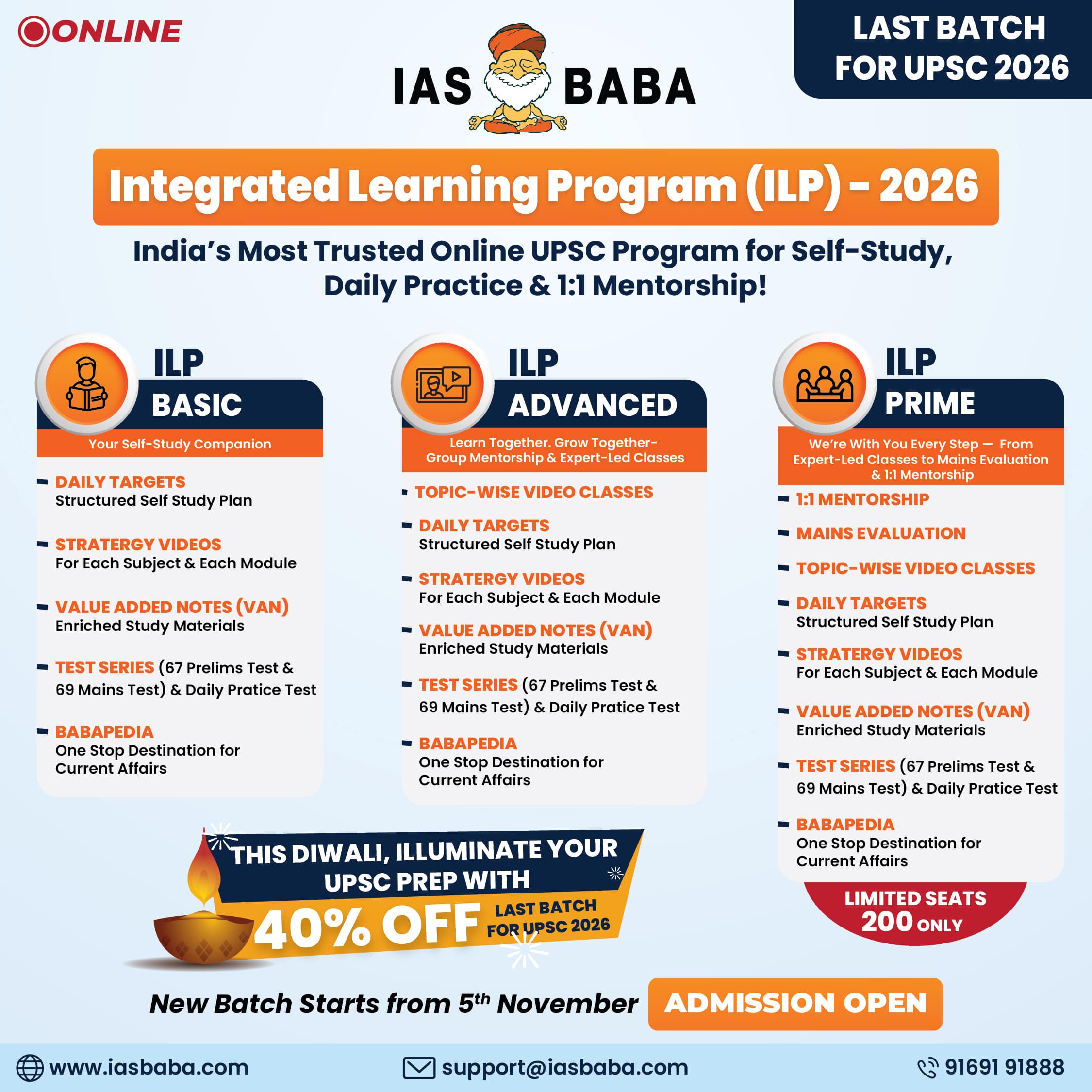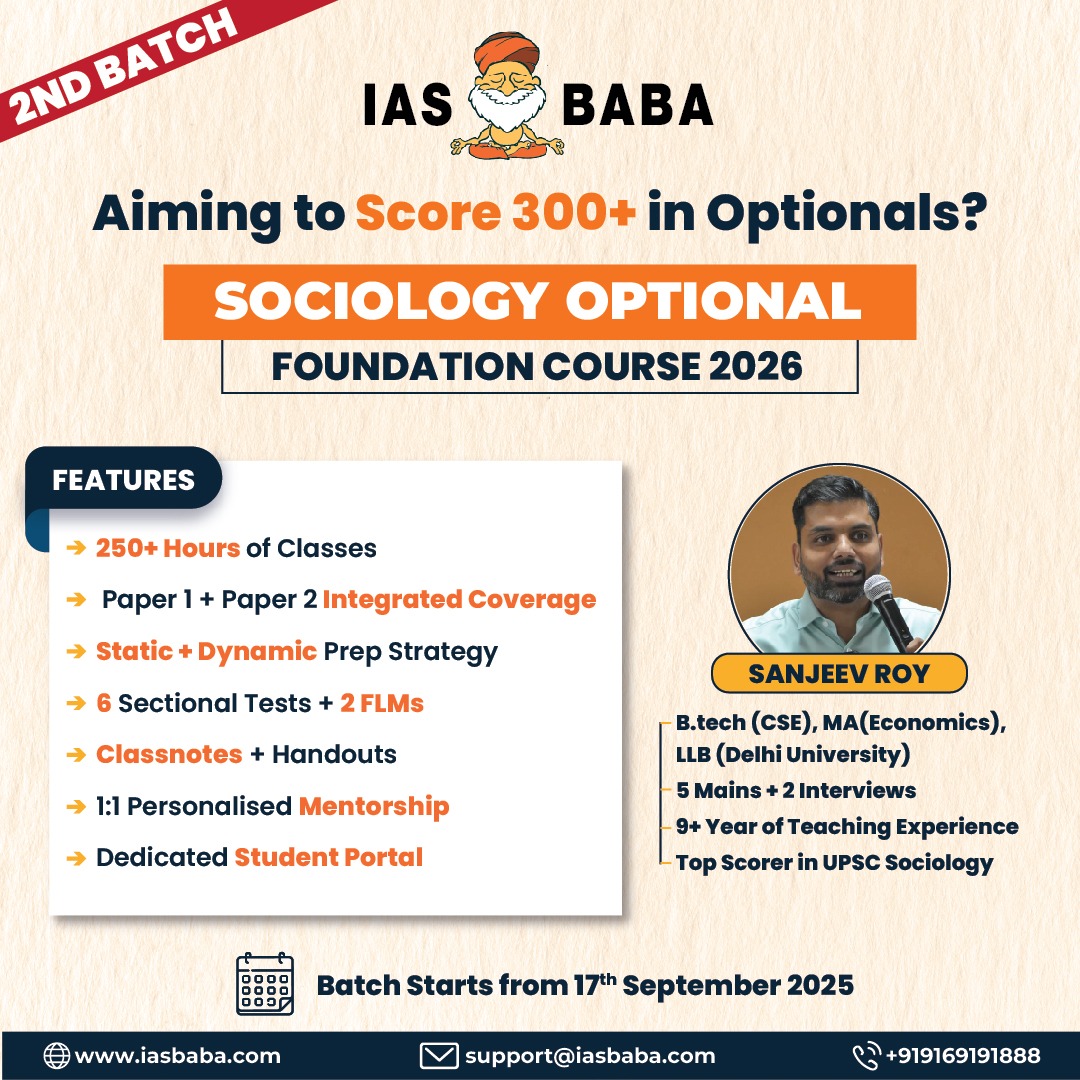IASbaba's Daily Current Affairs Analysis
rchives
(PRELIMS Focus)
Category: HEALTH
Context: Kerala’s maternal mortality ratio (MMR) has risen from 18 to 30 per lakh live births (2021–2023).
Key Points
- Lowest in India: Kerala and Andhra Pradesh still share the top rank for lowest MMR among states.
- Calculation: MMR = maternal deaths per one lakh live births.
- Declining births: Live births fell to under 4 lakh in 2023, from an earlier 5–5.5 lakh.
- Maternal deaths: Remain steady at 120–140 annually, except for the COVID spike in 2021.
- Denominator effect: Fewer births but steady deaths push the ratio up.
- Policy view: The rise reflects demographic changes, not worsening maternal care. District-level health data is considered more accurate than SRS data.
Learning Corner:
Infant Mortality Rate (IMR)
- Definition: Number of infant deaths (under 1 year of age) per 1,000 live births in a given year.
- Significance: Key indicator of child health, maternal care, and public health services.
- Current Trend: Declining steadily due to better immunization, institutional deliveries, and neonatal care.
Under-5 Mortality Rate (U5MR)
- Definition: Number of deaths of children under five years per 1,000 live births.
- Significance: Reflects overall socio-economic development, nutrition, sanitation, and access to healthcare.
- India’s Goal: Reduce U5MR in line with Sustainable Development Goal (SDG-3).
Neonatal Mortality Rate (NMR)
- Definition: Number of deaths within the first 28 days of life per 1,000 live births.
- Significance: Sensitive indicator of maternal health, quality of delivery care, and newborn services.
- India’s Focus: Strengthening Special Newborn Care Units (SNCUs) and early neonatal interventions.
Maternal Mortality Ratio (MMR)
- Definition: Number of maternal deaths (during pregnancy, childbirth, or within 42 days of termination of pregnancy) per 100,000 live births.
- Significance: Reflects quality of maternal healthcare, safe motherhood programs, and women’s health services.
- Trend: India has shown significant decline, but regional disparities persist.
Crude Death Rate (CDR)
- Definition: Number of deaths (from all causes) per 1,000 population in a given year.
- Significance: General indicator of mortality, influenced by demographic structure (ageing population).
Source: THE HINDU
Category: POLITY
Context : Vice-President Election 2025
India’s Vice-President is being elected today. NDA candidate C.P. Radhakrishnan is strongly favored over Opposition nominee Justice B. Sudershan Reddy due to NDA’s numerical strength and YSRCP’s support. The abstention of BJD and BRS has further reduced the effective majority needed.
- Numbers Game: NDA commands 425 of 781 eligible votes, while the Opposition has 324. The winning majority is 391, giving the NDA a clear edge.
- Candidates:
- C.P. Radhakrishnan (68): Veteran BJP leader, former governor, seen as a loyal party figure.
- Justice B. Sudershan Reddy (79): Former Supreme Court judge, known for civil rights judgments.
- Other Factors: Enhanced CRPF security for VP’s residence and mock poll training to ensure valid voting.
Learning Corner:
Vice-President election in India:
Constitutional Basis
- Provided under Article 63–71 of the Constitution.
- The Vice-President is the ex-officio Chairman of the Rajya Sabha.
Electoral College
- Composed of members of both Houses of Parliament (Lok Sabha + Rajya Sabha).
- Consist both Elected and nominated MPs (in the case of president, only elected members).
- This is different from the President’s election, where State Legislatures also participate.
Election Process
- Conducted by the Election Commission of India.
- Held through proportional representation by means of a single transferable vote (STV), and voting is by secret ballot.
- A candidate must secure a quota of votes (more than 50% of valid votes cast).
Eligibility Criteria (Article 66, 67)
- Citizen of India.
- At least 35 years of age.
- Qualified to be elected as a Rajya Sabha member.
- Cannot hold an office of profit.
Term and Removal
- Term: 5 years, but eligible for re-election.
- Can resign to the President.
- Removal: By a resolution of Rajya Sabha, passed by an effective majority, and agreed to by Lok Sabha.
Key Points
- In case of a vacancy in the President’s office, the Vice-President acts as President until a new one is elected.
- The office ensures continuity in governance and parliamentary functioning.
Source: THE INDIAN EXPRESS
Category: INTERNATIONAL
Context: Ugandan warlord Joseph Kony, leader of the Lord’s Resistance Army (LRA), is the focus of the ICC’s first-ever in absentia hearing on war crimes and crimes against humanity
Background
- Rose to power in 1986, notorious for guerrilla warfare and use of child soldiers.
- LRA forced mass displacement, abducted children, and committed brutal crimes across Uganda, Sudan, and Congo.
- Despite global manhunts and a $5 million bounty, Kony remains at large.
Global Response
- ICC hearing presents evidence against him in his absence—a milestone in international justice.
- Kony became a global symbol of impunity after a viral campaign highlighted his crimes.
- International efforts continue to bring him to justice.
Learning Corner:
International Criminal Court (ICC):
Establishment & Legal Basis
- Established by the Rome Statute (1998), came into force in 2002.
- Headquarters: The Hague, Netherlands.
- First permanent treaty-based international criminal court.
Jurisdiction
- Prosecutes individuals (not states) for:
- Genocide
- Crimes against humanity
- War crimes
- Crime of aggression (added in 2018).
- Jurisdiction applies when:
- Crimes committed on territory of a member state, or
- Crimes committed by a national of a member state, or
- When referred by the UN Security Council.
Membership
- 124 member states (as of now).
- Major powers like the US, China, Russia, and India are not members.
- African nations form a large part of membership, though some have criticized the ICC for bias.
Functioning
- Independent judicial body, not part of the UN system (but cooperates with it).
- Investigations can be initiated by:
- A State Party,
- The UN Security Council, or
- The Prosecutor (proprio motu) with court approval.
Criticism & Challenges
- Accused of focusing disproportionately on Africa.
- Lack of enforcement power—relies on states to arrest suspects.
- Some states view it as infringing on sovereignty.
Source: THE INDIAN EXPRESS
Category: ECONOMICS
Context : The President of India, Droupadi Murmu, attended the Platinum Jubilee celebrations of EEPC (Engineering Export Promotion Council) India
She praised India’s ancient leadership in trade and spirituality, urging citizens to work toward making India a global center of knowledge and commerce once again. Highlighting EEPC’s role as a bridge between Indian manufacturers and global markets, she noted its contribution to raising engineering exports from $70 billion to over $115 billion in the past decade despite global challenges.
The President called on EEPC to expand India’s role in global value chains, foster high-quality and cost-effective engineering, and build a supportive ecosystem for innovation. She emphasized that global trade challenges also present opportunities, encouraging a ‘Nation First’ approach to strengthen the economy and transform India into a leading innovation-driven nation.
Learning Corner:
Engineering Export Promotion Council (EEPC) India
- Establishment: Set up in 1955 under the Ministry of Commerce & Industry, Government of India.
- Nature: A trade and investment promotion organization focusing on engineering sector exports. Recognized as the apex body of engineering exporters.
- Membership: Represents over 12,000 members, including large companies, SMEs, and trading houses.
- Functions:
- Acts as a bridge between Indian engineering exporters and global markets.
- Provides policy inputs to the government on trade and export promotion.
- Organizes international trade fairs, buyer-seller meets, and delegations abroad.
- Offers market intelligence, export-related services, and support to its members.
- Runs the Technology Centres and Common Service Facilities for MSMEs.
- Achievements: Engineering exports have grown significantly under EEPC’s guidance, reaching over $115 billion in recent years.
- Recognition: EEPC is considered a Model Export Promotion Council (EPC) by the Government of India for its consistent performance.
Source: PIB
Category: GEOGRAPHY
Context: On the night of September 7–8, 2025, a spectacular total lunar eclipse, popularly called a Blood Moon, was visible across Asia.
The eclipse lasted about 82 minutes, making it one of the longest of the decade, with totality from 11:01 PM to 12:23 AM IST in India. During the event, Earth came between the Sun and the Moon, casting a shadow that turned the Moon a striking red-orange due to Rayleigh scattering, which filters out blue light and allows red light to reach the Moon’s surface.
The event attracted skywatchers worldwide, with stunning images and live streams capturing the rare celestial spectacle.
Learning Corner:
Blood Moon (Total Lunar Eclipse)
- A Blood Moon occurs during a total lunar eclipse, when the Earth comes directly between the Sun and the Moon, blocking sunlight from reaching the Moon.
- Instead of going completely dark, the Moon appears red or reddish-orange.
- This happens because of Rayleigh scattering: Earth’s atmosphere scatters shorter blue wavelengths of sunlight while the longer red wavelengths bend around Earth and illuminate the Moon.
- The intensity of the red color depends on the amount of dust, pollution, or volcanic particles in Earth’s atmosphere.
- Unlike a solar eclipse, a lunar eclipse (and hence a Blood Moon) is visible from anywhere on Earth where the Moon is above the horizon at the time.
- Blood Moons are rare but predictable astronomical events, often lasting longer than solar eclipses.
Partial Lunar Eclipse
- Occurs when only a part of the Moon enters Earth’s umbra (central shadow).
- The rest of the Moon remains illuminated by direct sunlight.
- The Moon appears as if a dark “bite” has been taken out of it.
- More frequent than total lunar eclipses.
Total Lunar Eclipse
- Occurs when the entire Moon enters Earth’s umbra.
- The Moon appears reddish-orange (Blood Moon) due to Rayleigh scattering and refraction of sunlight through Earth’s atmosphere.
- Can last up to 1 hour or more, depending on Earth-Moon-Sun alignment.
- Less frequent compared to partial eclipses but more spectacular.
Key Difference:
- Partial eclipse → only part of Moon darkens.
- Total eclipse → whole Moon darkens and turns red.
Source: THE HINDU
(MAINS Focus)
Introduction (Context)
India is witnessing a demographic shift with a rapidly growing elderly population. Ageing is often accompanied by declining income levels, increased dependency, and greater vulnerability to chronic diseases. These factors combined make healthcare expenses one of the most pressing challenges for senior citizens in India.
Hence, Doctors stress the need for people to be prepared for future healthcare expenses, while also emphasising the importance of strengthening public healthcare infrastructure.
Current Status
- 14.9 crore elderly in 2022 (10.5% of total population).
- By 2050, India will have nearly 319 million elderly citizens (projected), creating unprecedented pressure on health systems.
- Highest concentration in southern and western states.
- Older adults often suffer from multiple comorbidities (diabetes, hypertension, arthritis, heart disease, respiratory ailments
- Loss of income or retirement increases dependency on family support, increasing financial stress.
- Lack of adequate insurance coverage and high out-of-pocket expenditure undermine access to quality healthcare.
Challenge of High healthcare expenditure
- Elderly often need frequent out-patient consultations for problems like chronic joint pain, arthritis, high blood pressure, diabetes complications, heart diseases, breathing problems, and vision issues.
- In-patient care is required for more serious cases such as surgeries (eye/abdominal), stroke, advanced heart issues, and complications from diabetes.
- According to the India Ageing Report 2023 by the United Nations Population Fund India and International Institute for Population Sciences the enormous burden of healthcare costs depletes savings, leading to distress financing and debts.
| According to the report, fever/pyrexia of unknown cause, chronic pain in joints/arthritis, high blood pressure, generalised pain, diabetes or related complications, breathing problems, problems with eyes, heart-related issues, gastroenteritis, and injuries or accidents were the top 10 reasons for accessing out-patient care.
Hospitalisation for fever/pyrexia of unknown cause, gastroenteritis, heart-related issues, breathing problems, ophthalmic surgery, abdominal surgery, diabetes or related complications, and stroke are the top 10 reasons for accessing in-patient care. |
Challenges related to Insurance schemes
In India, both the Central as well as several State governments offer health insurance schemes. Private health insurance is also available.
Some are:
Ayushman Bharat–Pradhan Mantri Jan Arogya Yojana (PM-JAY)
- In late 2024, the Union government expanded PM-JAY to cover all senior citizens aged 70 and above, irrespective of income
- Provides cashless hospitalisation up to ₹5 lakh per family per year at empanelled public and private hospitals.
Chief Minister’s Comprehensive Health Insurance Scheme (CMCHIS), Tamil Nadu
- A state-run scheme that offers free health coverage to low-income families, including the elderly.
- Covers costly medicines, diagnostic imaging (CT/MRI scans), and advanced surgeries like angioplasty, bypass surgery, and joint replacements.
Integration of State Schemes with PM-JAY
- Several states have merged or linked their own insurance schemes with PM-JAY.
- This ensures wider coverage, portability of benefits across states, and reduced duplication of services.
According to the India Ageing Report
- Insurance coverage is limited, only about 20.4% of elderly in the 60–69 age group are covered, and coverage reduces further with increasing age.
- Gender disparity exists as men (19.7%) are slightly better insured than women (16.9%), reflecting women’s weaker economic and social security.
- More than half of the elderly (52.9%) are not even aware of available schemes
- Around 21.6% cannot afford insurance premiums.
- Elderly in rural areas have far less awareness and access to insurance compared to their urban counterparts.
- Current insurance schemes do not cover palliative care, end-of-life care, physiotherapy, or home-based oxygen support, even though these are common needs of the elderly.
- Rising private insurance premiums with age make it nearly impossible for many elderly citizens to afford coverage.
Challenge of non communicable diseases
- The elderly commonly suffer from non-communicable diseases (NCDs) such as diabetes, hypertension, and cardiac ailments, which require lifelong treatment and regular medication.
- Advanced care such as ICU admissions, ventilatory support, or surgeries leads to skyrocketing medical bills.
- Due to high costs, many elderly patients discontinue medication, avoid hospitalisation, or even request discharge against medical advice, worsening their health outcomes.
Way forward
- Expand government hospital capacity for geriatric care.
- Introduce elderly vaccination drives (pneumonia, influenza) to reduce morbidity
- Simplify enrolment for elderly in public schemes
- Expand coverage to palliative care, post-hospitalisation care, rehabilitation, and home-based support.
- Offer affordable premiums with higher coverage for elderly-specific needs
- Promote financial literacy on saving for health in middle age
- Introduce dedicated geriatric health funds or subsidies.
- Incorporate home-based healthcare into insurance packages.
- Replicate Chief Minister’s Comprehensive Health Insurance Scheme in which, diagnostic imaging such as CT scans, MRI scans and costly medicines are also covered. Also, advanced procedures like angioplasties, coronary bypass surgeries and replacement of joints are offered under this scheme, benefiting many elderly.
Conclusion
India’s ageing population faces the dual challenge of declining income and rising healthcare costs. While schemes like PM-JAY and state-specific insurance provide partial relief, gaps in coverage and affordability persist. The way forward lies in strengthening public health infrastructure, expanding insurance scope, and ensuring financial preparedness.
Mains Practice Question
Q With a rapidly ageing population, India faces the dual challenge of rising healthcare costs and inadequate financial protection for senior citizens.” Critically examine. (250 words, 15 marks)
Introduction (Context)
Punjab, historically known as the “Land of Five Rivers,” derives its fertility and agricultural prosperity from its rich riverine system.
However, this geographical advantage also renders the state highly vulnerable to floods. While heavy monsoon rains and upstream inflows from Himachal Pradesh and Jammu & Kashmir (J&K) remain natural triggers, the scale of devastation in recent floods highlights governance lapses, dam mismanagement, weak embankments, and unsustainable human activities.
Current status
- The state government has declared all 23 districts to be flood-hit.
- 1,902 villages have been inundated, more than 3.8 lakh people affected, and more than 11.7 lakh hectares of farmland destroyed.
- At least 43 people have been killed.
- The worst-affected is the northern district of Gurdaspur, where 329 villages and 1.45 lakh people have been affected, and 40,000 hectares of farmland inundated.
Geographical reasons
- Three perennial rivers Ravi, Beas and Sutlej flow through the state of Punjab.
-
- The Ravi passes through Pathankot and Gurdaspur
- The Beas through Hoshiarpur, Gurdaspur, Kapurthala, Amritsar, Tarn Taran (Harike wetland), and Harike; and
- The Sutlej through Nangal, Ropar, Nawanshahr, Jalandhar, Ludhiana, Moga, Ferozepur, and Tarn Taran (Harike wetland).
- The seasonal river Ghaggar, and smaller tributaries and hill streams, known locally as choes, also cut across the state.
- Rainfall in Punjab and upstream catchment areas in Himachal Pradesh and Jammu & Kashmir (J&K) make Punjab’s rivers swell up during the monsoon.
- While an elaborate system of dhussi bundhs (earthen embankments) form a first line of defence against flooding, heavy rain often overwhelms these.
- Heavy rain in southern Punjab’s Malwa region led to severe waterlogging in the districts of Ludhiana, Jalandhar, Ropar, Nawanshahr and Moga.
- Punjab, Himachal Pradesh, and J&K have all recorded more than 45% excess rainfall (above the seasonal normal) this year.
Issues due to the dam management
- Bhakra Dam: built on the Sutlej in Himachal Pradesh’s Bilaspur district, operated by the Bhakra Beas Management Board (BBMB).
- Pong Dam: located on the Beas in Kangra district of Himachal Pradesh, also under BBMB.
- Thein (Ranjit Sagar) Dam: situated on the Ravi at the Punjab–J&K border, operated by Punjab State Power Corporation Ltd. and the state’s Irrigation Department.
- During excessive rainfall, reservoirs fill up and water must be released to prevent overtopping, which could lead to catastrophic dam failure.
- BBMB follows a rule curve system—target reservoir levels maintained through the year depending on inflows and weather forecasts.
- Extreme rainfall, however, often leaves little buffer, forcing sudden water releases to protect dam safety.
- Even controlled releases during heavy rains can cause severe flooding downstream, as witnessed this year.
Issue with BBMB
- Punjab officials allege BBMB maintains high reservoir levels in July–August for winter irrigation and power, leaving insufficient cushion for August–September monsoon inflows.
- Complaints include lack of timely warnings, with sudden water releases catching state authorities unprepared.
- The core issue lies in BBMB’s constitutional setup: it is a Centre-controlled body, with flood management not included in its primary mandate.
- The 2022 amendment to BBMB rules, allowing officers from anywhere in India (not just Punjab and Haryana) to hold top posts, has further deepened Punjab’s concerns of being sidelined.
Issues related to Governance
- Due to the poor coordination between officials upstream and downstream, in August, two gates of the Madhopur Barrage on the Ravi were destroyed after sudden water releases from the Thein (Ranjit Sagar) Dam, worsening the floods in Pathankot, Gurdaspur, and Amritsar.
- At Ranjit Sagar, Pong, and Bhakra, water was stored for many days and then released in massive volumes, causing sudden flooding downstream. A flood cushion was not maintained, and warnings were delayed.
- Weak maintenance of dhussi bundhs (earthen embankments) worsened flooding, many weakened by illegal sand mining along riverbeds.
- Punjab’s Drainage Department estimates that strengthening embankments and desilting rivers would cost ₹4,000–5,000 crore, but these preventive measures are repeatedly ignored.
Impact of floods
- Floods in Punjab cause severe humanitarian crises, including loss of lives, displacement of communities, and destruction of houses.
- They lead to massive agricultural losses, damaging standing crops like wheat, rice, and cotton, thereby threatening India’s overall food security.
- The economic impact is immense, with extensive damage to infrastructure, transport networks, and irrigation systems, resulting in losses worth thousands of crores.
- On the social front, floods aggravate rural distress, increase farmer indebtedness, and trigger migration pressures.
- The problem also has a cross-border dimension, as floods often extend into Pakistan’s Punjab, creating regional security and humanitarian concerns.
Way forward
- Punjab floods demand urgent reforms in flood management, with BBMB’s role expanded to include flood control and stronger Centre–State coordination.
- Infrastructure like bundhs and riverbeds must be reinforced through desilting and curbing illegal mining.
- Early warning systems and climate adaptation strategies are needed to build resilience.
- Crop diversification and climate-resilient farming can reduce agricultural vulnerability.
- Dedicated funds, regular audits, and preventive investments are crucial for sustainable flood preparedness.
Conclusion
Punjab’s floods stem from governance failures poor dam management, weak embankments, illegal mining, and lack of preparedness aggravated by climate change.
Urgent reforms in dam governance, embankment strengthening, and community-based resilience are vital to safeguard lives, livelihoods, and India’s food security.
Mains Practice Question
Q Floods in Punjab are a recurring phenomenon rooted in both natural geography and human mismanagement. Critically examine(250 words, 15 marks)
Source: https://indianexpress.com/article/explained/why-punjab-keeps-flooding-10232974/














